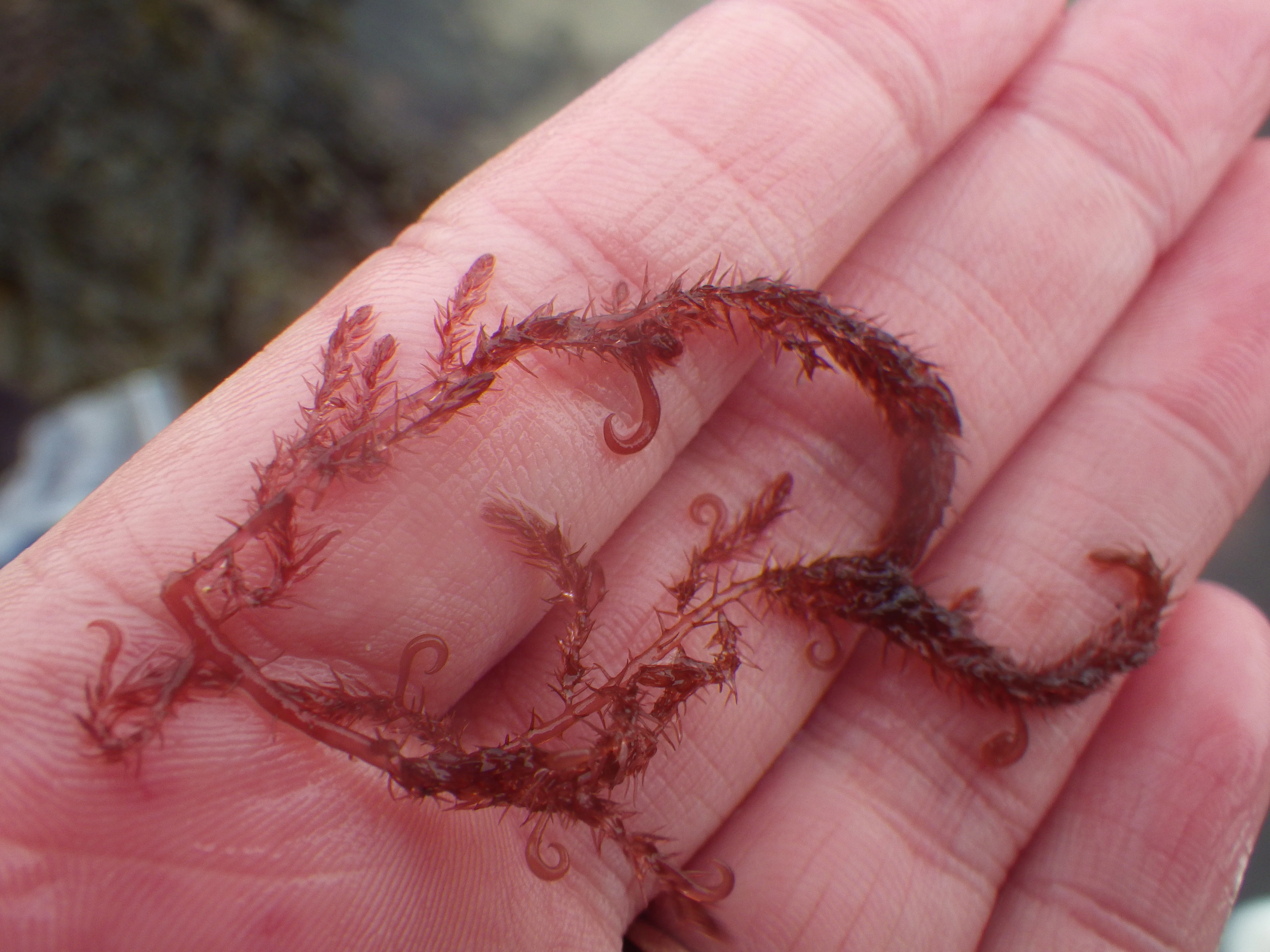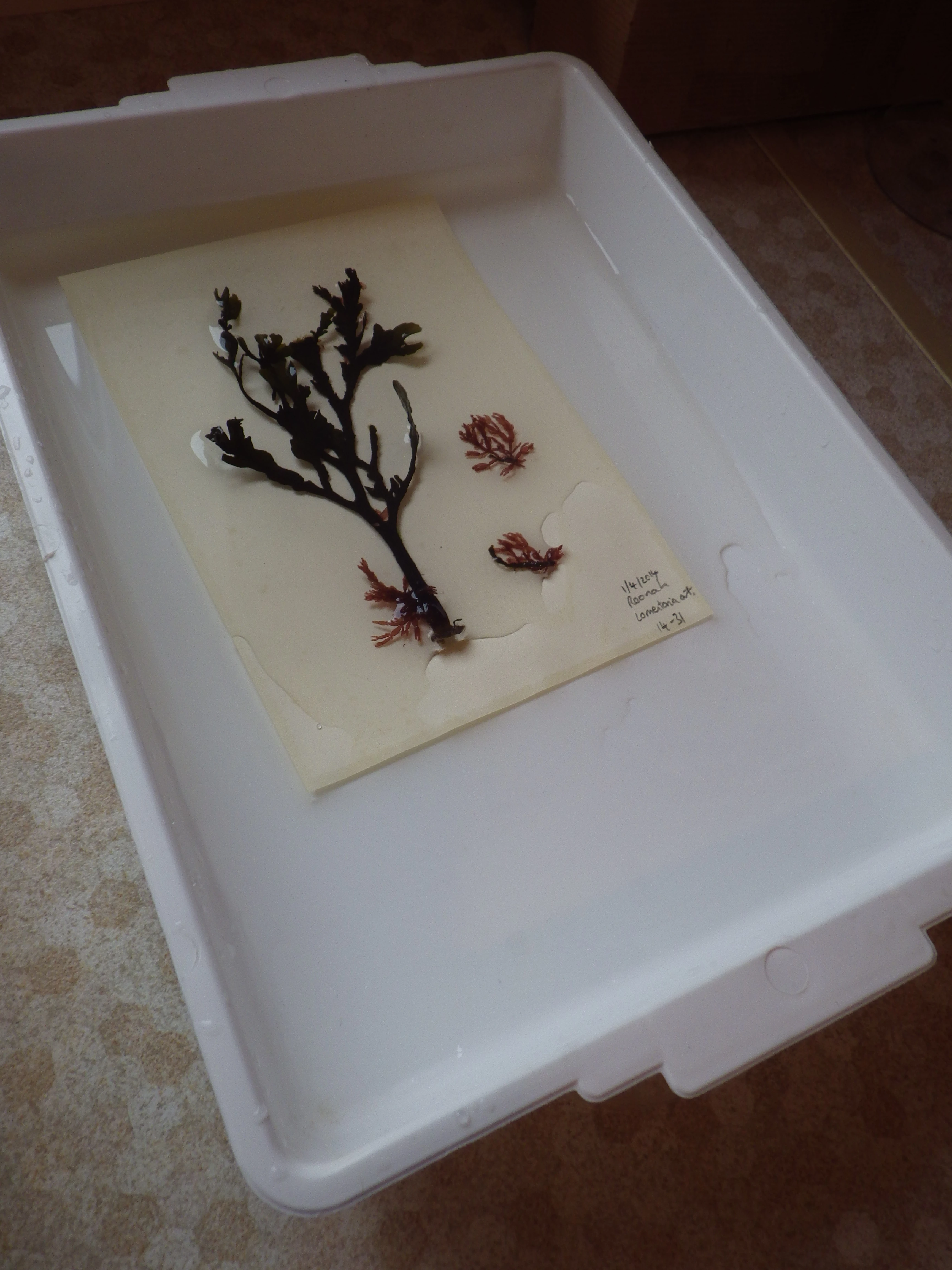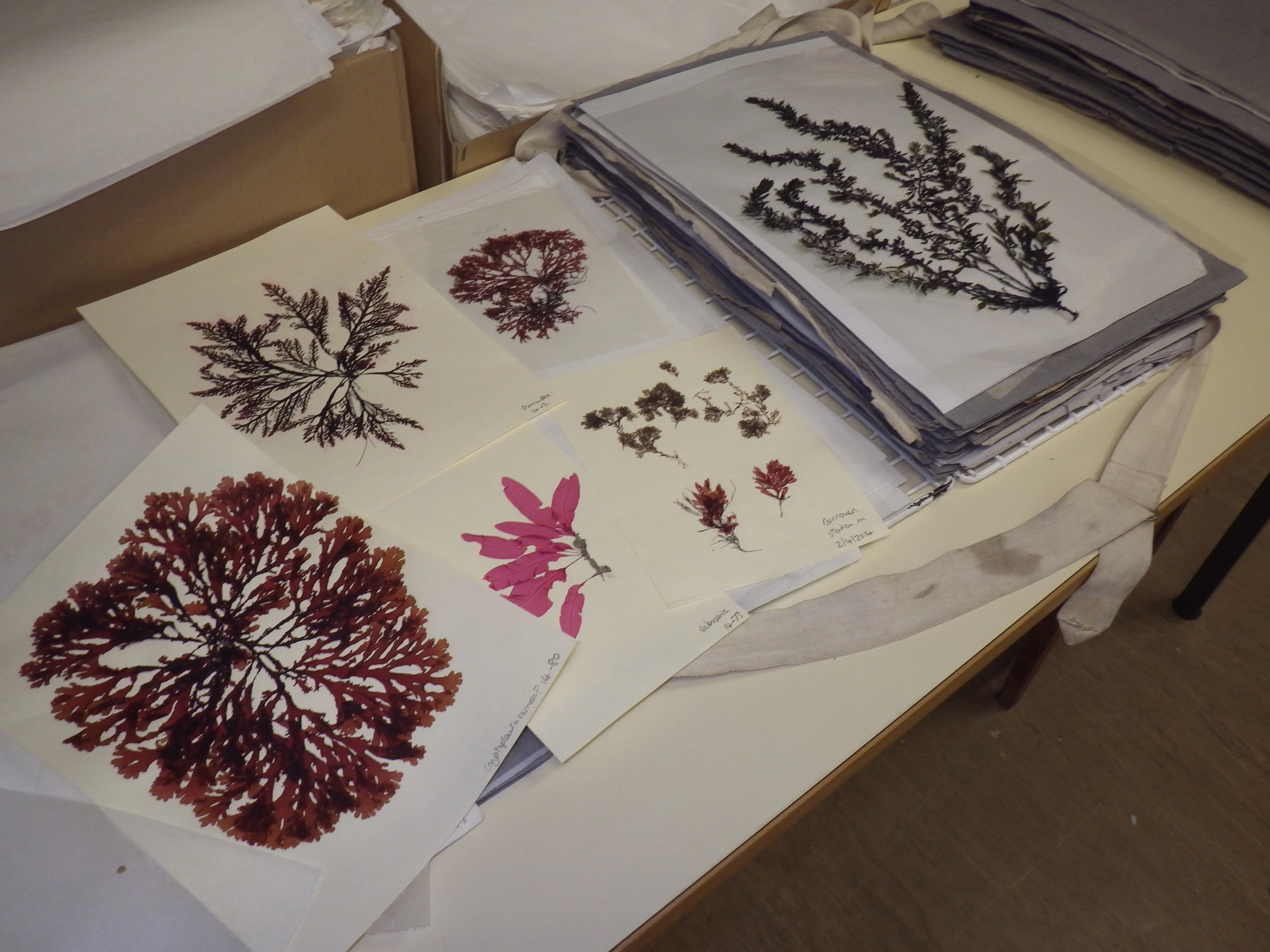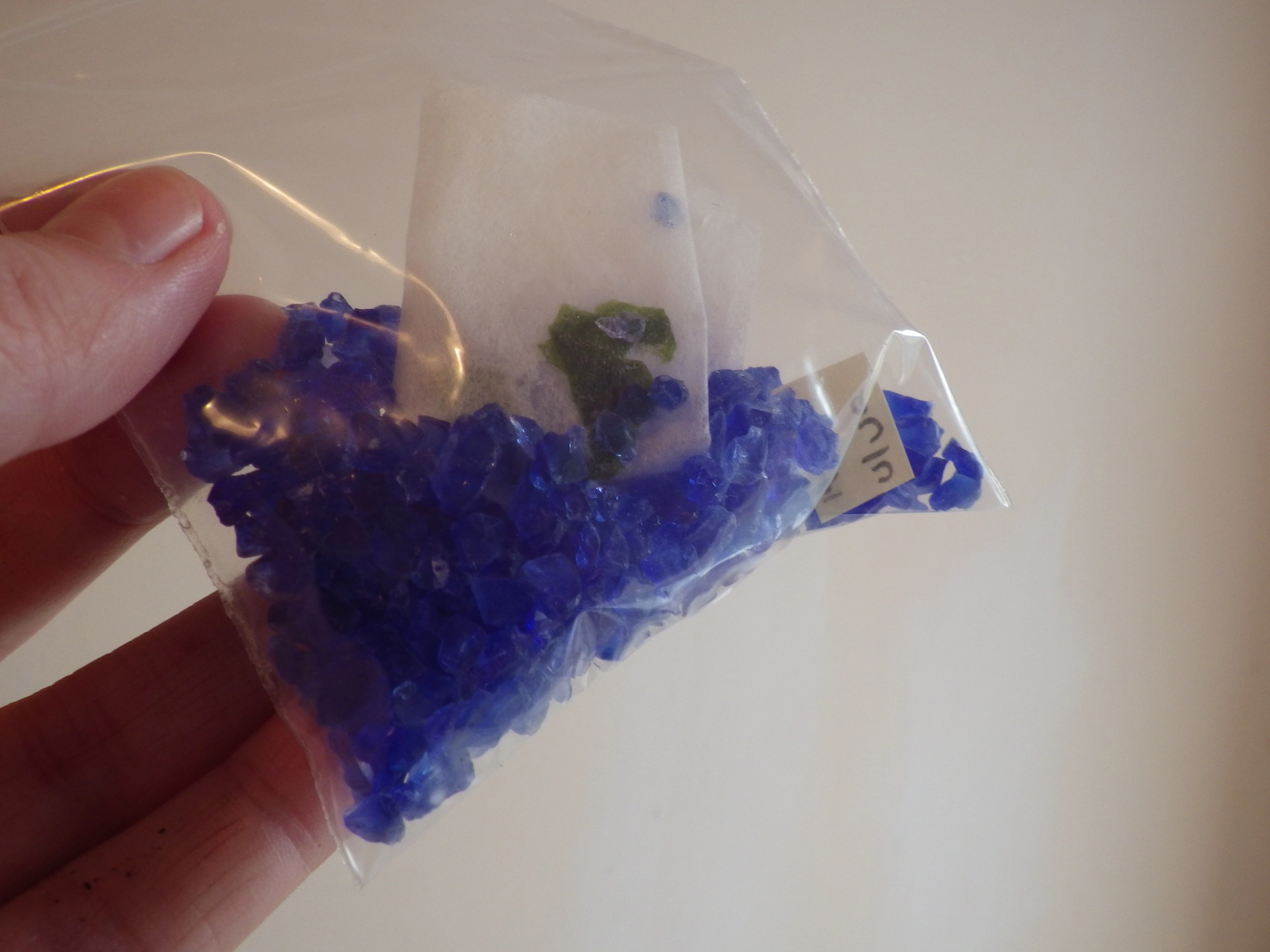Collecting Seaweeds in Ireland
, 10 April 2014
By Kath Slade
The marine team are back from their fieldwork to West of Ireland with lots of specimens to sort through, including seaweeds. The timing of fieldwork was chosen to coincide with several very low tides, allowing us to sample species lower down the shore, which are less adapted to long periods out of water. We still had limited a time to sample around low water (approx. 2 hours).
The lower shore holds many of the red seaweeds, such as Sea Beech (Delesseria sanguinea), Fine-Veined Crinkle Weed (Cryptopleura ramosa) and Bonnemaison’s Hook Weed (Bonnemaisonia hamifera).
Immediately after collection, there was a fair amount of processing to do, as seaweeds don’t last long out of their natural habitat on the shore. Many were floated out in trays of seawater in order to spread all of the fronds (“leaves”) out, before being transferred and pressed onto conservation grade cotton paper. The specimens were stacked together, and between each layer we had blotting paper to soak up the water. The stacks of seaweed were then placed into large plant presses, just like those used for flower pressing. Each day the blotting paper was changed to remove as much water as possible. When we returned to the Museum, we placed the plant presses in drying machines to speed up the process and prevent the seaweeds from rotting.
Some seaweeds are difficult to identify from external characters alone. For these species, small portions were collected and placed into silica gel. This dries the seaweed much quicker than pressing so that the DNA is better preserved enabling molecular work to be carried out at a later date. Others were preserved in formalin, which removes the colour of the seaweed but preserves the cell details and the seaweed’s 3D structure. Further identification work, will now be carried out back at the Museum.
All this preparation allows us preserve the seaweeds for future scientific studies. The specimens go into the Welsh National Herbarium (plant collections) at the Museum, and each provides evidence of what seaweeds are present at a particular locality at a particular time. The pressing process is so effective that specimens keep for hundreds of years.




